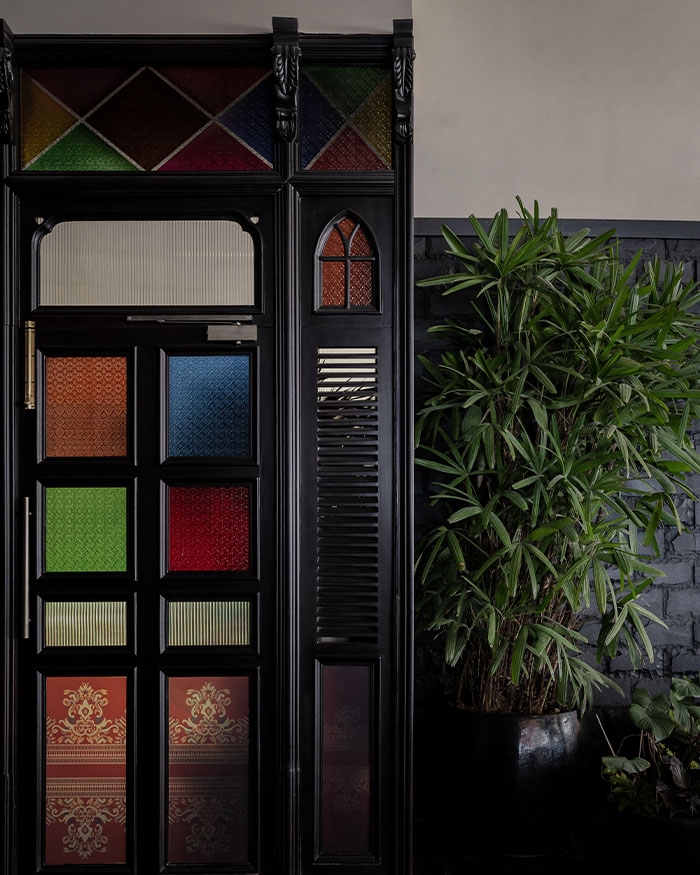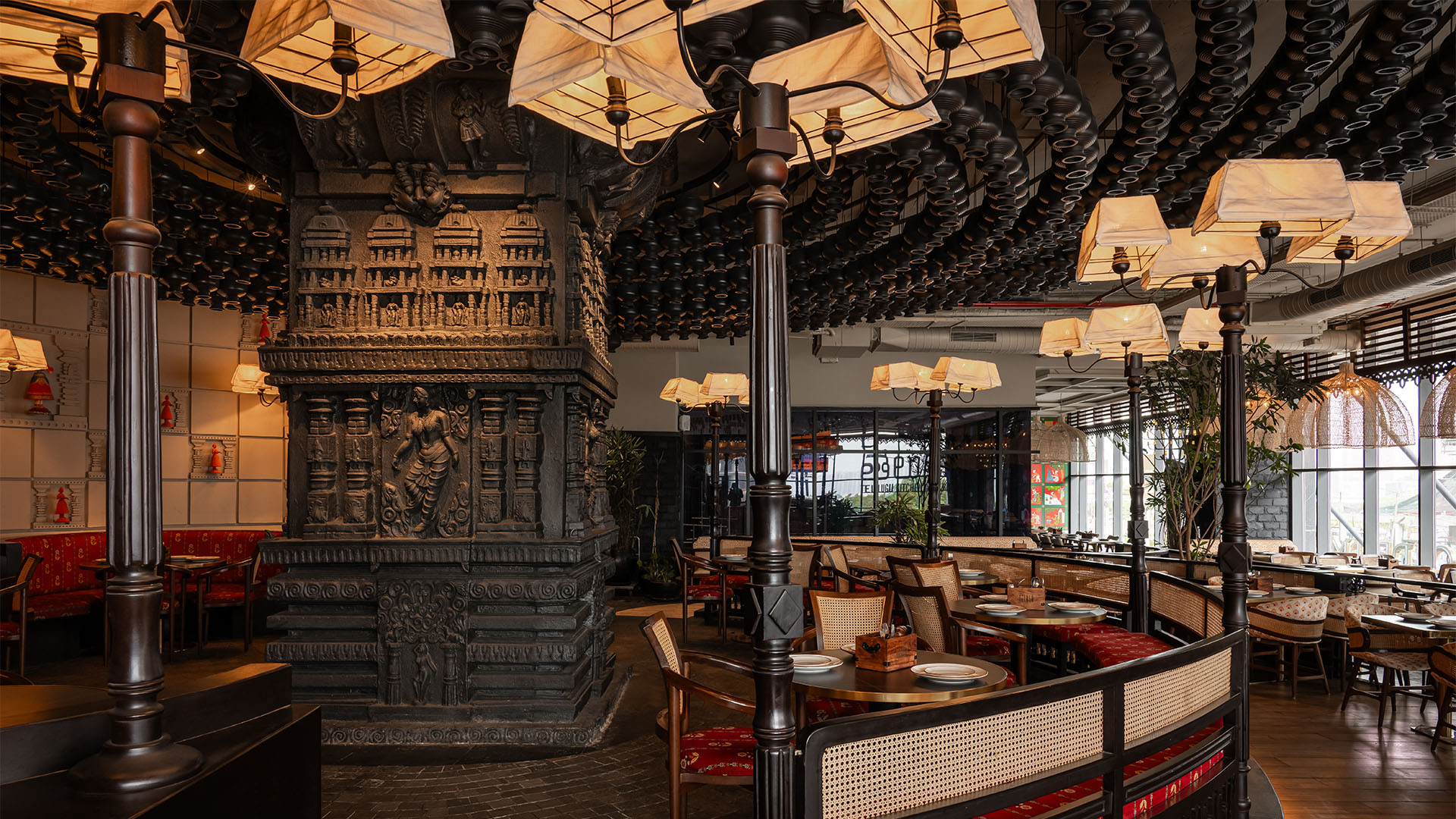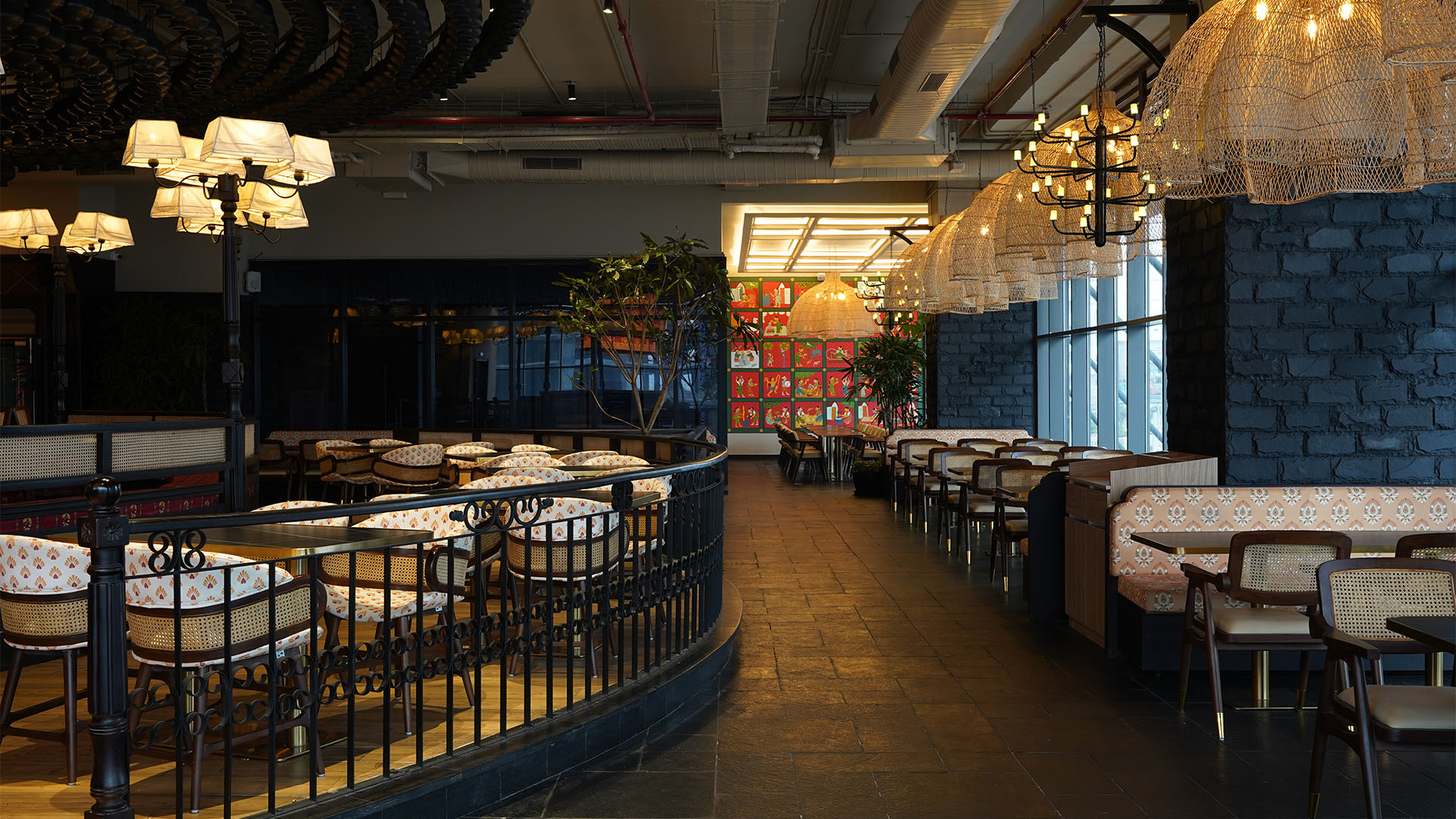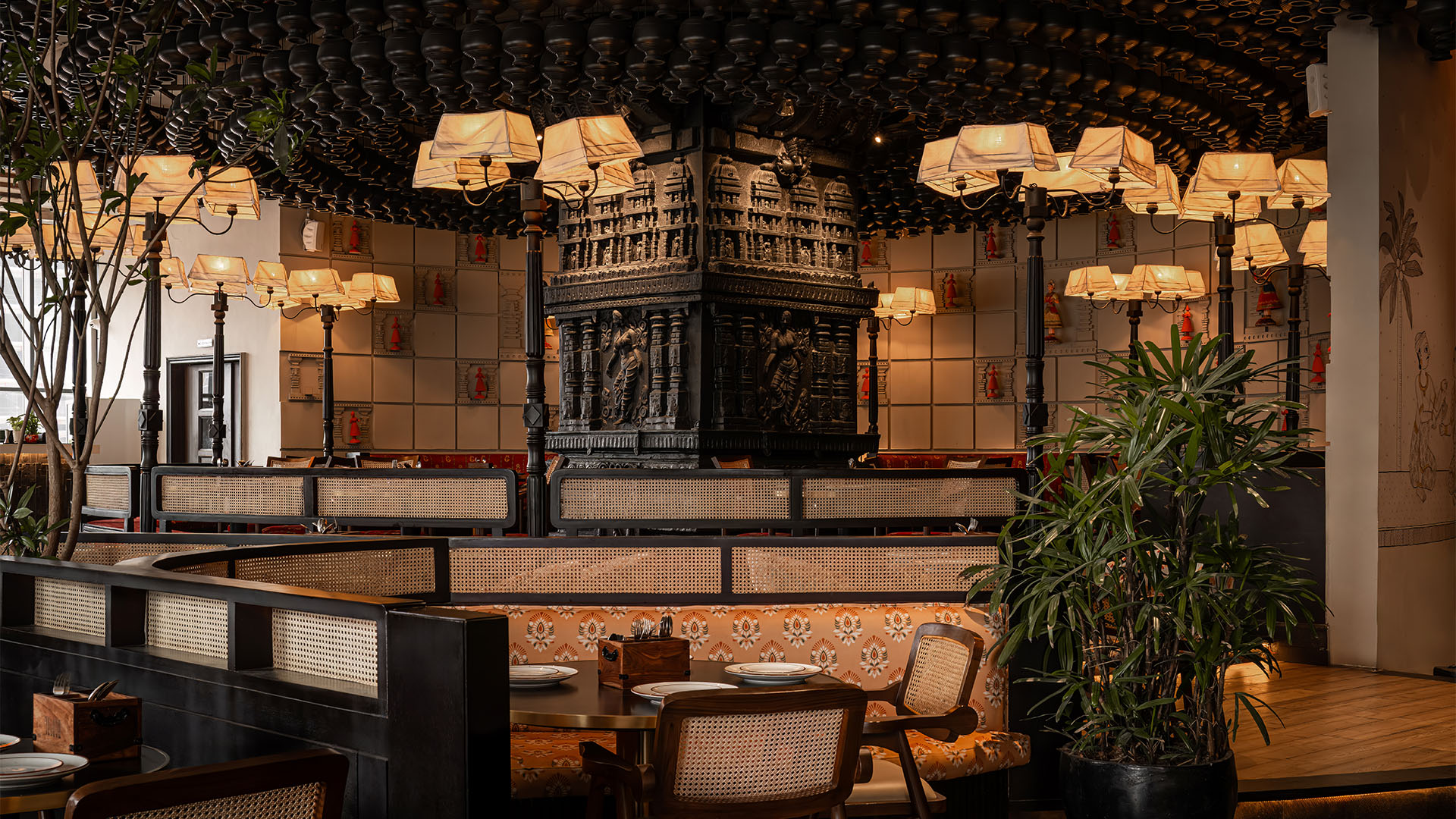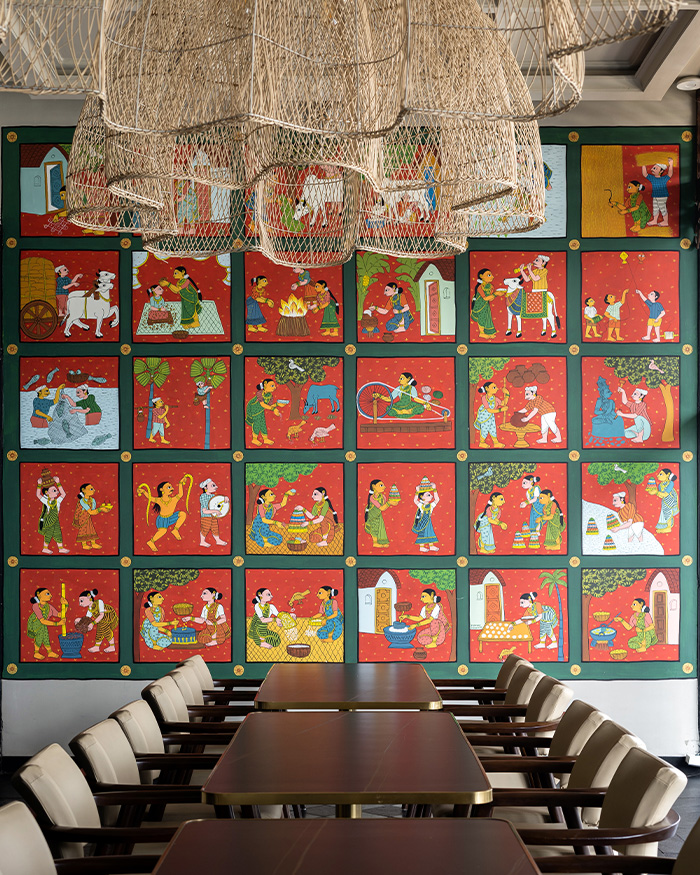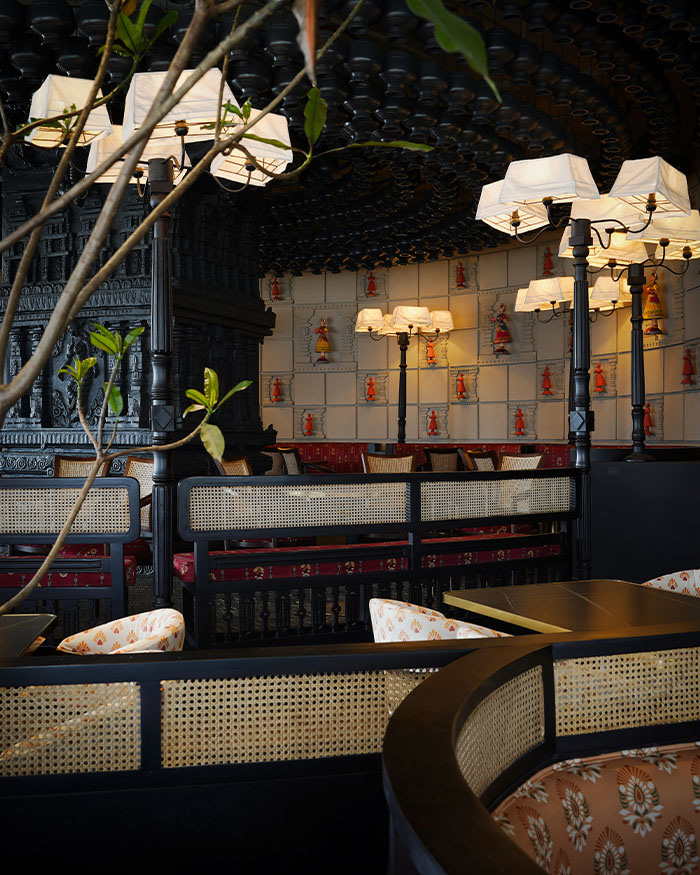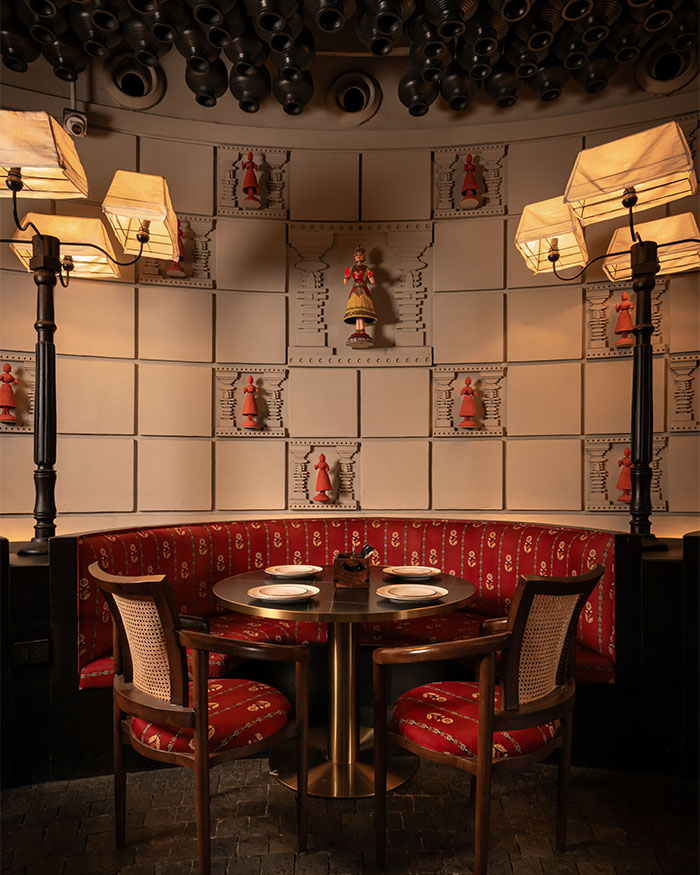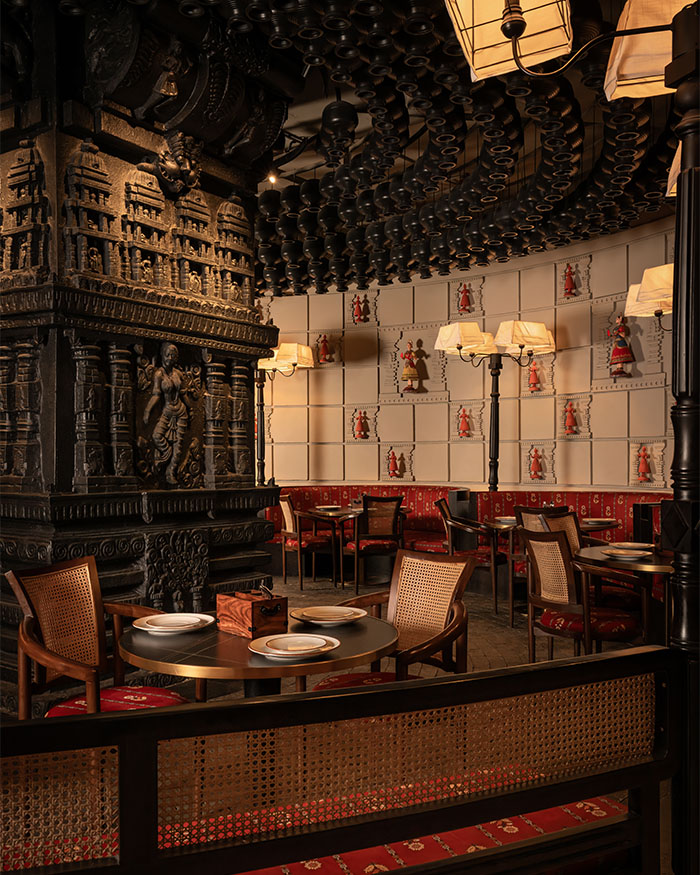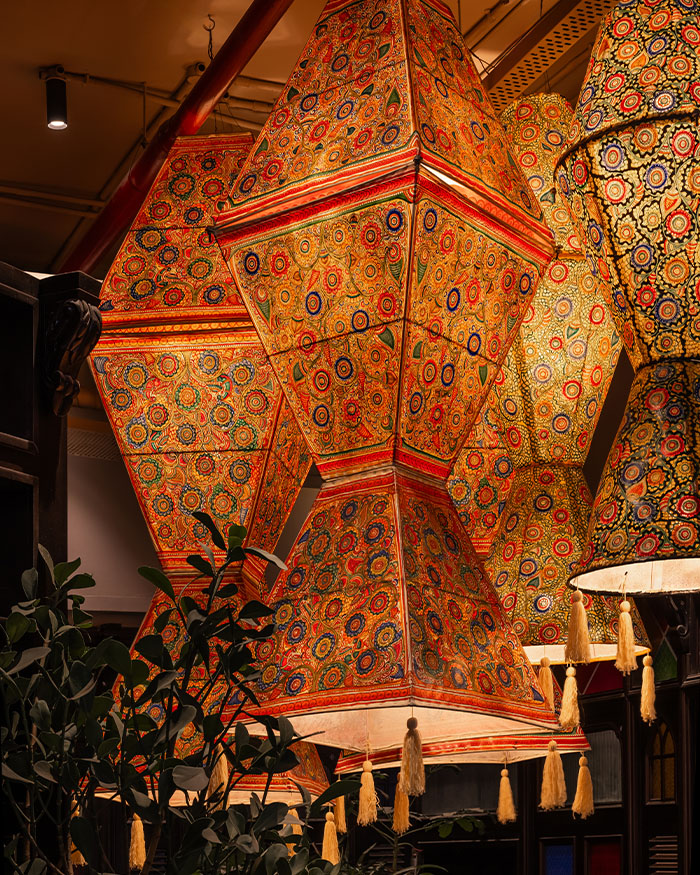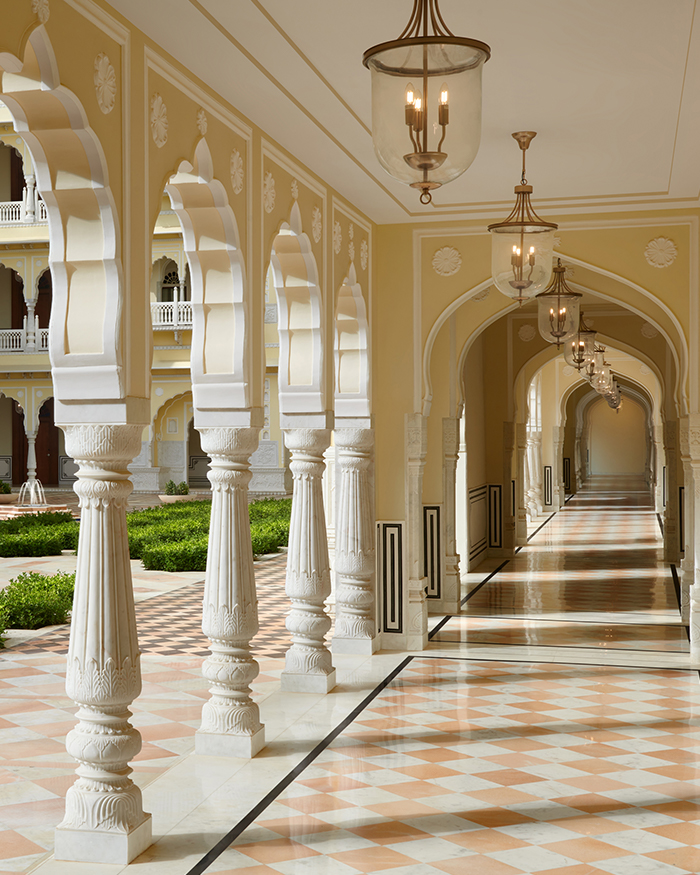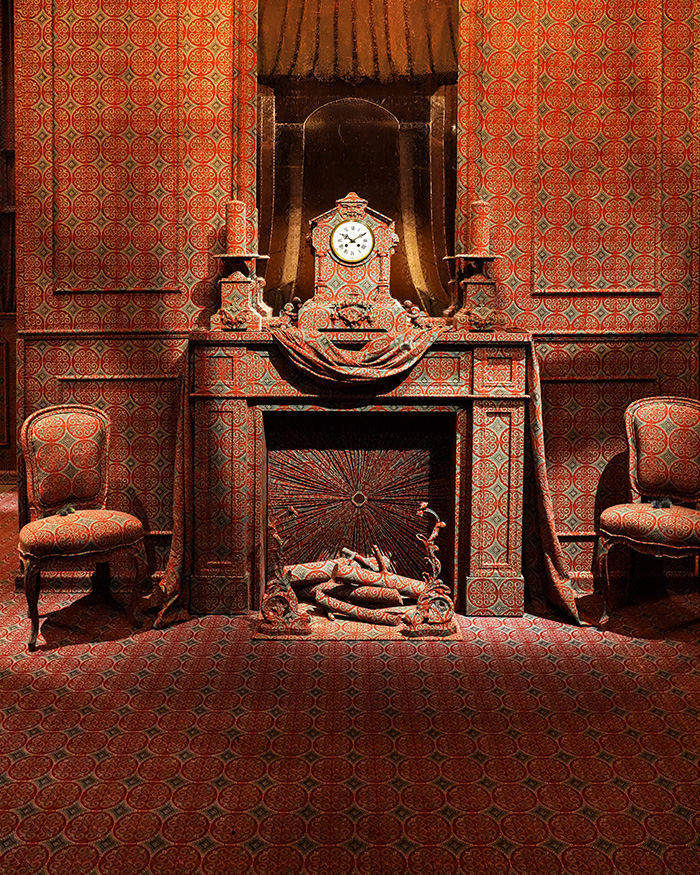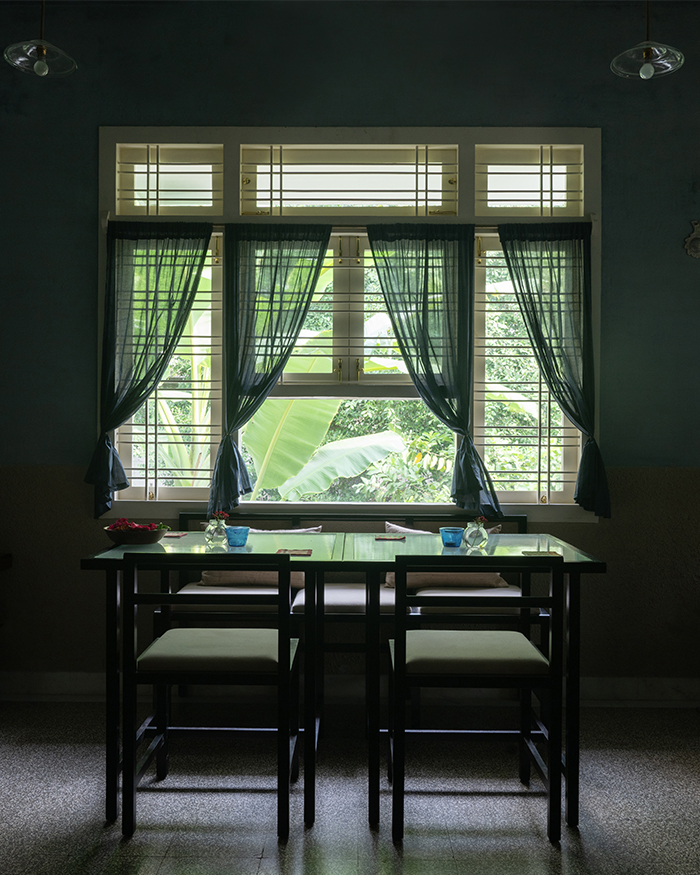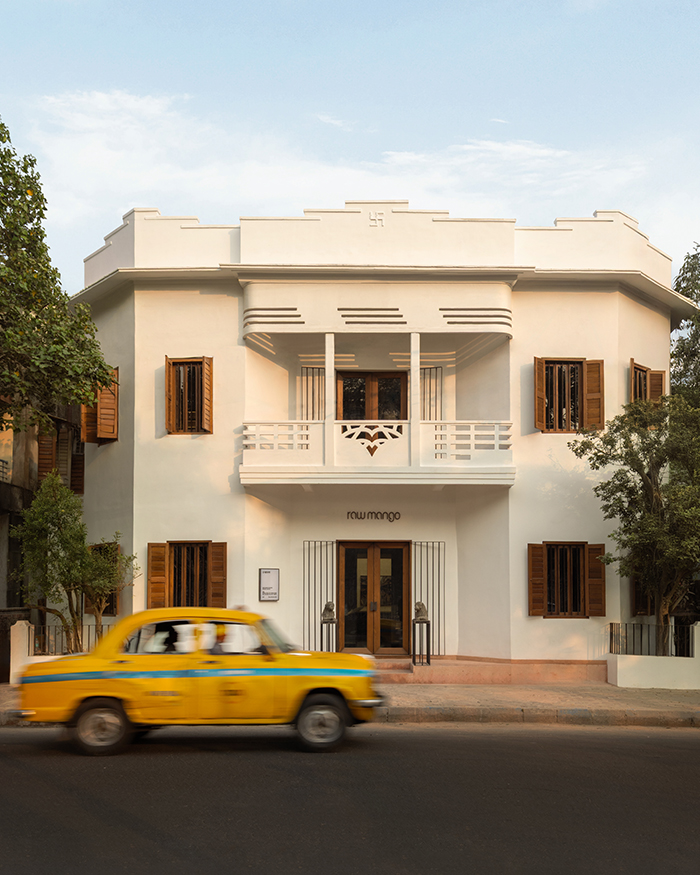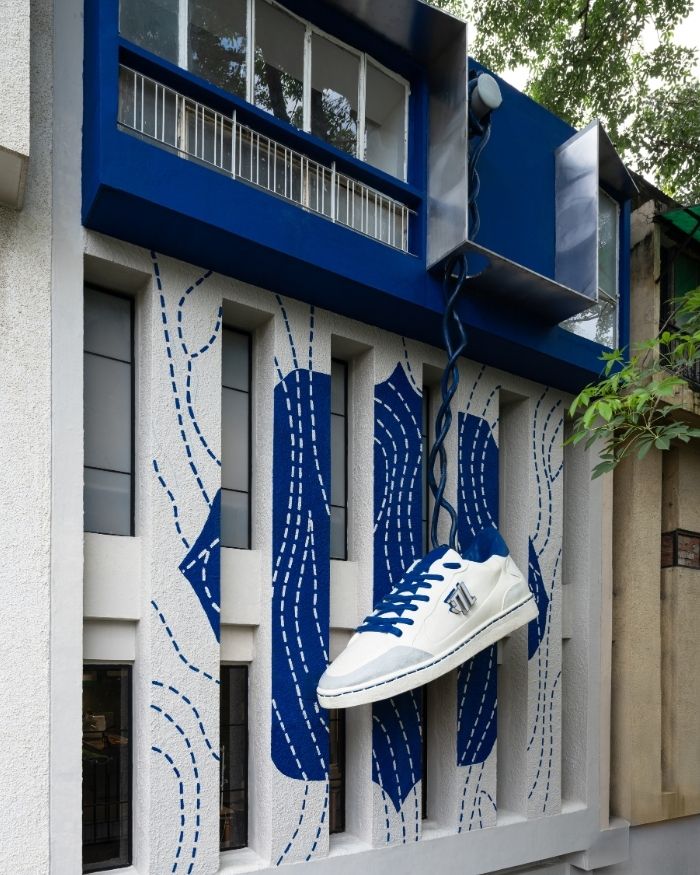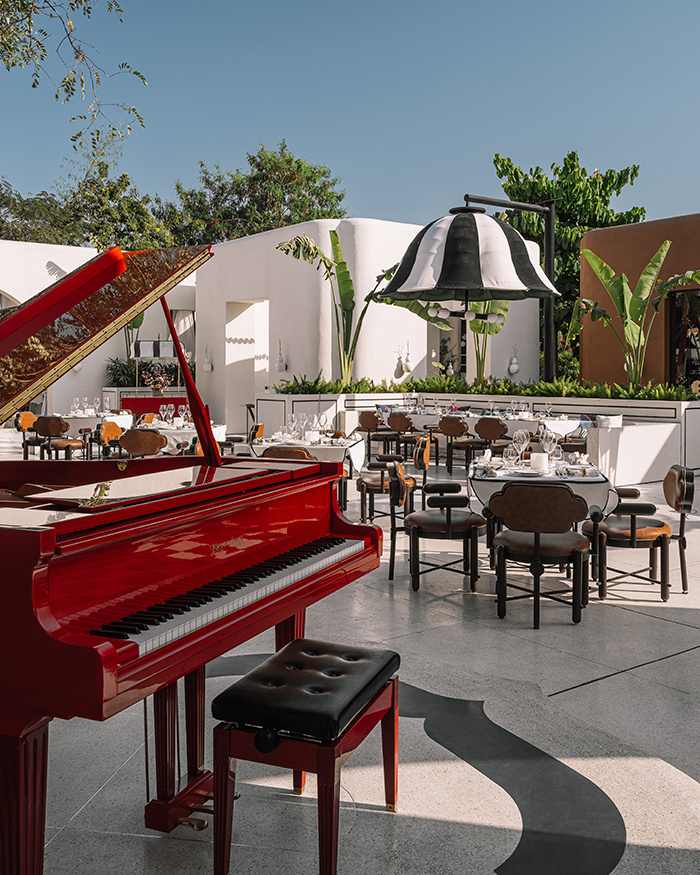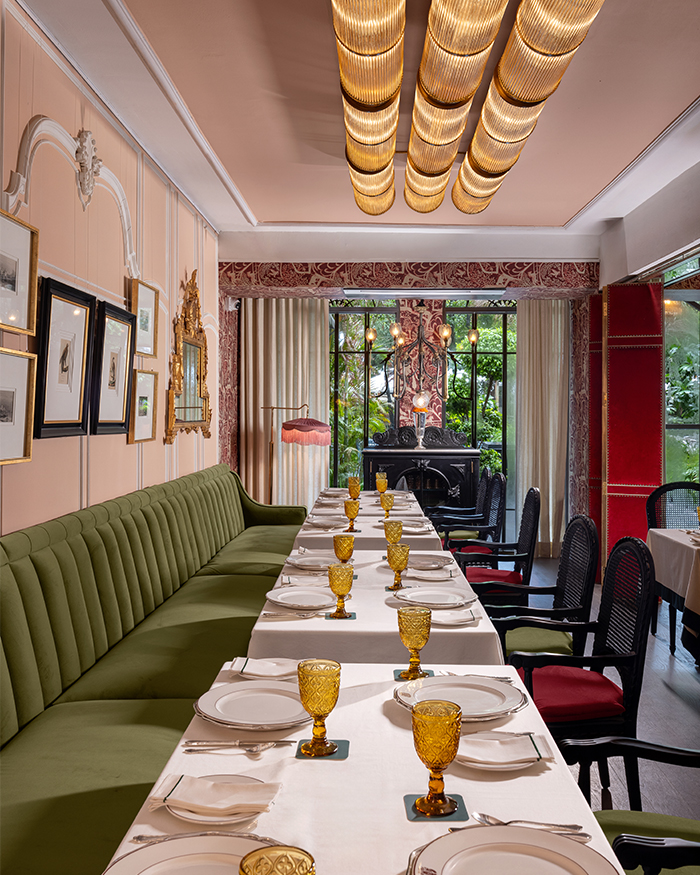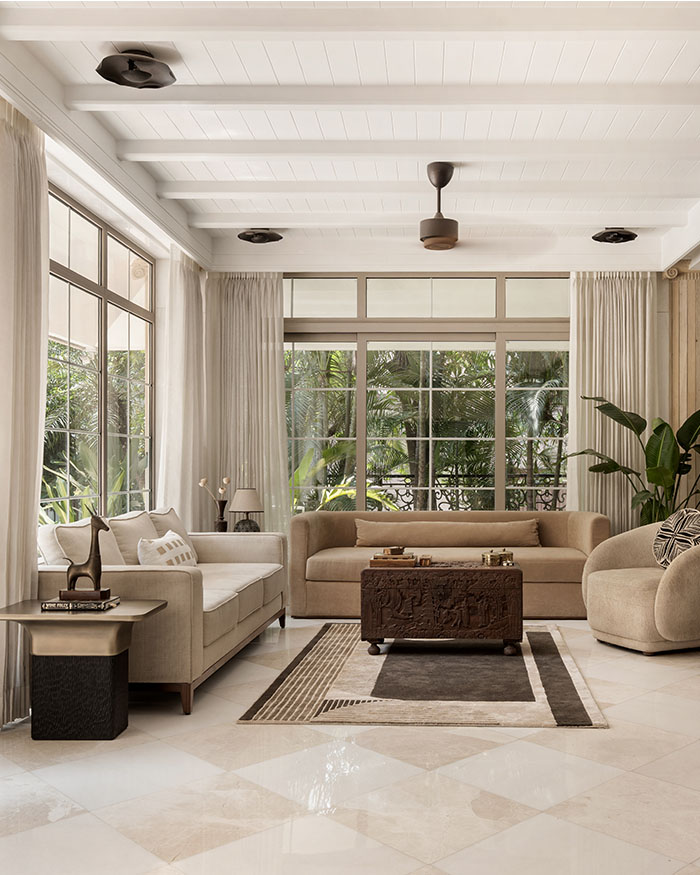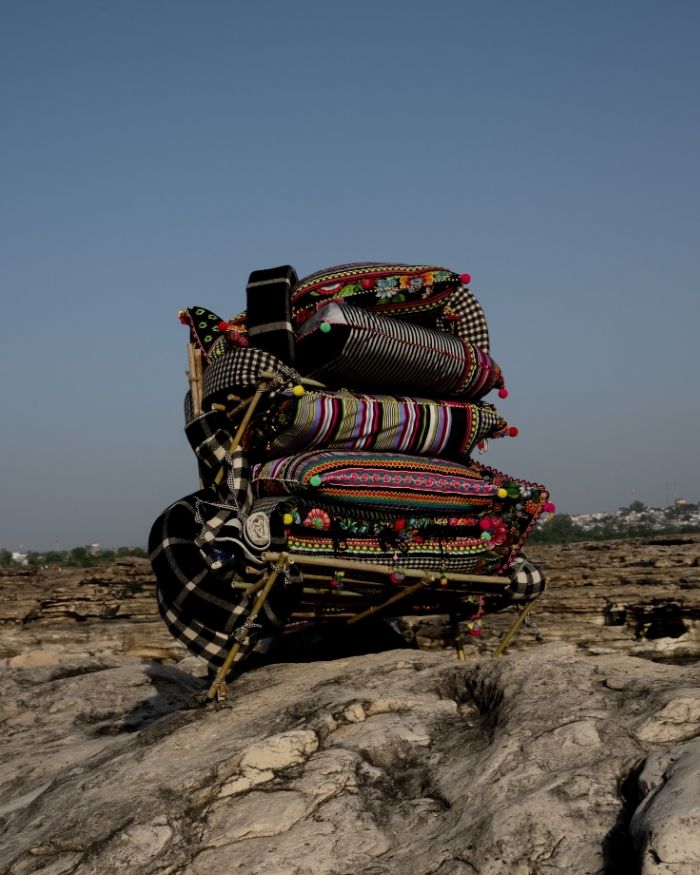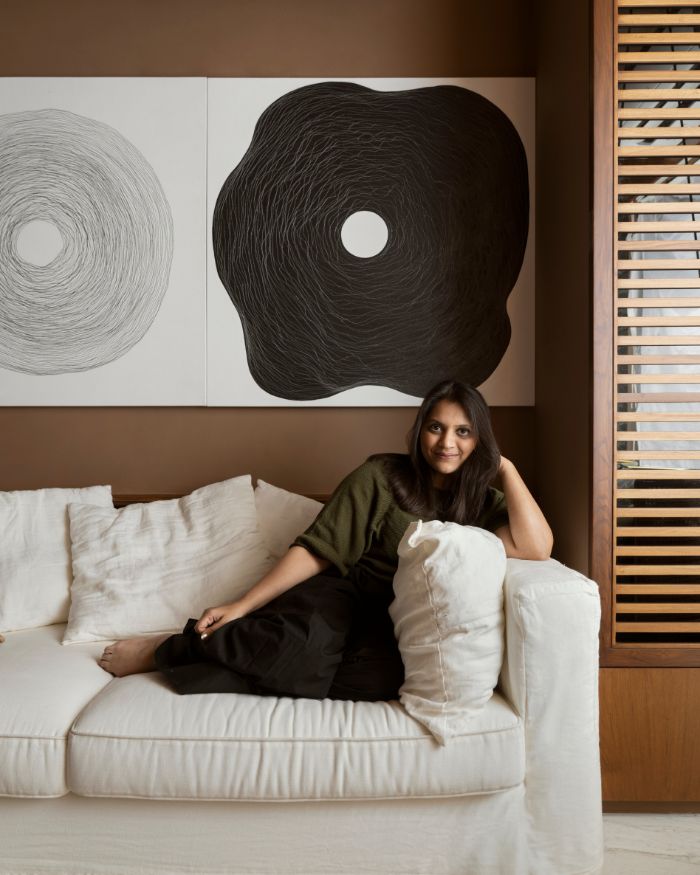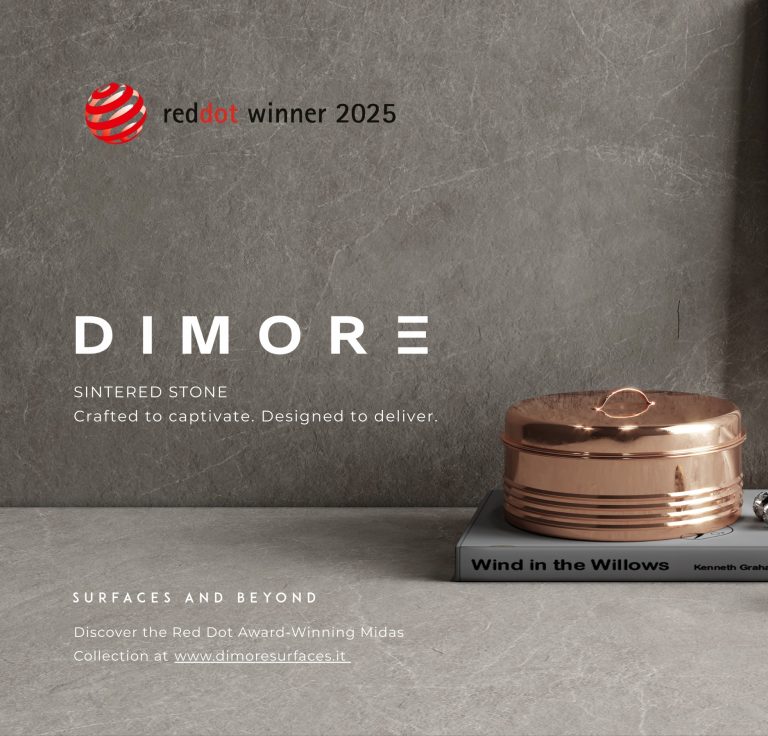A world of dualities awaits you behind this restaurant’s guarded entrance, which stands at the threshold of Hyderabad’s evolving epicurean landscape. Dubbed Telusa, brushes of Dravidian clues and a contemporary twist take the centrestage here, masquerading as a portal to the city’s glorious past. While some details are carefully concealed behind a Kalamkari-inspired teak wood partition, others are peppered throughout the 5,500 sq ft space as a way for the diners to stop, gaze and linger.
Geethu Gangadharan and Sreyas Vidhu, founders of architectural firm Fellow Yellow, masterfully demonstrate with Telusa how novel ideas and tradition can coexist in aesthetic harmony. “Inspired by the Warangal Fort and its Kakatiya columns, a central pillar stands at the heart of this space. Rising from basalt tiles, it reminds visitors that they stand before a lineage built on stone,” the duo explains.
“Inspired by the Warangal Fort and its Kakatiya columns, a central pillar stands at the heart of Telusa. Rising from basalt tiles, it reminds visitors that they stand before a lineage built on stone”
Geethu Gangadharan and Sreyas Vidhu, Fellow Yellow
